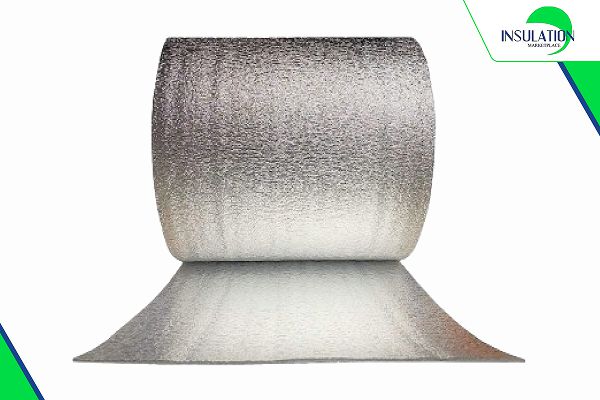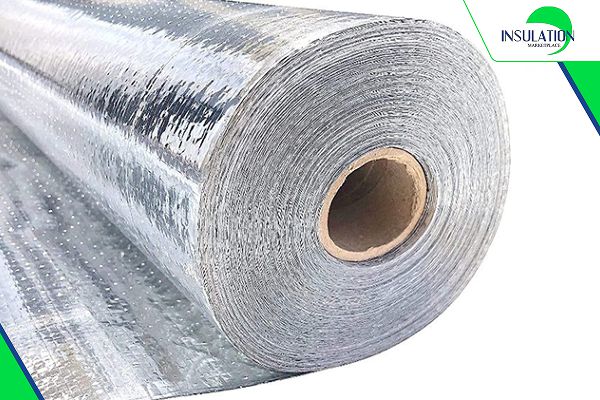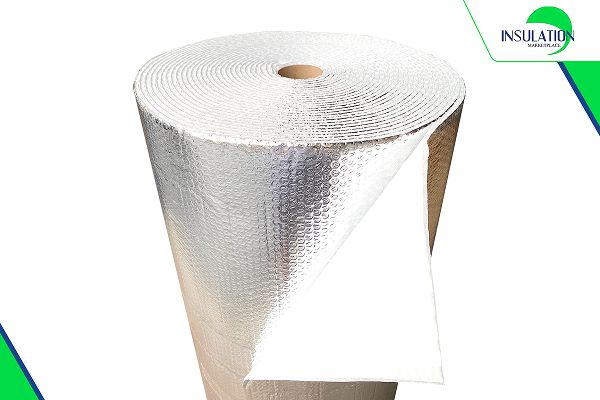Best Insulation For Pole Barn: Top 3 Choices
Insulating your pole barn is essential for maintaining a comfortable temperature, preventing moisture buildup, and reducing energy costs. Without proper insulation, your barn can become too hot in the summer and too cold in the winter. Thankfully, there are several insulation options to choose from.
In this guide, we will explore the best insulation for pole barn available at Insulation MarketPlace. You will learn about their benefits, how to choose the right one, and get answers to common insulation questions.
What is the Best Insulation For Pole Barn?
There are many insulation options for your pole barn, including foam core insulation, radiant barrier, and bubble core insulation. The right choice will help you save money, maintain a comfortable temperature year-round, and prevent mold and rust. Here’s a breakdown of each insulation type and its benefits:
Foam Core Reflective Insulation
SmartSHIELD Foam Core Reflective Insulation is great for year-round temperature control. The foam core keeps heat in during winter and out during summer. It’s lightweight, easy to install, and works well for workshops, storage, or animal shelters.
Benefits:
- Best for Extreme Temperatures: Keeps your barn warm in freezing winters and cool in scorching summers.
- Reduces Drafts & Heat Loss: Helps create a stable indoor environment by keeping a dried barn to prevent mold and rust.
- Lightweight & Easy to Cut: You can install it easily without heavy tools.
- Long-Lasting Protection: Designed for durability and can last for years with minimal upkeep.
If you want to find the best insulation for a pole barn that is effective year-round and easy to install, this is a great choice.

Radiant Barrier
SmartFOIL Radiant Barrier is best for hot climates. It reflects heat away, keeping your barn cooler without AC. Ideal for storing equipment, feed, or livestock. Thin and easy to install on walls, ceilings, or roofs.
Benefits:
- Best for Hot Weather: Blocks up to 97% of radiant heat, keeping your barn cooler.
- Saves Energy Costs: Reduces the need for fans or air conditioning.
- Prevents Heat Damage: Protects stored equipment and feed from excessive heat.
- Ultra-Thin & Lightweight: Easy to attach to walls, roofs, and ceilings and won’t add extra weight to your structure.
If your main concern is keeping your barn cool and energy-efficient, a radiant barrier is a smart investment.

Bubble Reflective Insulation
SmartBUBBLE Single Bubble Reflective Insulation is an affordable option for temperature and moisture control. The bubble core helps regulate heat, while the reflective layer prevents condensation, mold, and rust. Perfect for humid areas.
Benefits:
- Best for Moisture Control: Reduces condensation, preventing mold and rust.
- Balances Temperature: Helps keep heat out in summer and warmth in during winter.
- Soft & Flexible Material: Easily fits around uneven surfaces like curved roofs.
- Affordable & Practical: A cost-effective way to add insulation without breaking the bank.
If you want insulation that is budget-friendly and easy to install, bubble reflective insulation is a solid option.

How to Choose the Best Insulation For Pole Barn?
There is no best insulation for pole barn, just the most suitable to your needs. Depend on the climate, usage, the money you are willing to spend and the type of installation that you prefer, you’ll know which insulation is the right one for you.
Climate
Climate is the first factor that you should consider when choosing insulation. For cold weather, heat need to be kept from escaping as much as possible, that’s where foam core reflective insulation works it best. Your barn will be warmed during winters thanks to the feature of heat retaining.
In contrast, a radiant barrier works better in hot climates as it can reflect heat awat from your barn. You will get rid of the burden of cooling costs in summer while enjoying more comfortable space. If the temperature changes extremely, you can consider combine those two types.
Usage
How you use your pole barn also matters. If it’s a workshop, livestock shelter, or living space, you’ll need insulation that provides strong temperature control and moisture resistance. Foam core reflective insulation or bubble reflective insulation seems to be the most ideal one for these situations.
If you just use your barn to store things, a simple radiant barrier is more than enough. Do not need high-performance insulation in this case to reduce extra cost.
Budget
Your budget affects which insulation type is best for you. Foam core reflective requires higher cost at first, but its usage is long-term and you’ll end up saving more for energy bill later. On the other hand, radiant barrier and bubble reflective insulation could be more affordable but still give the best result of energy-efficiency.
Installation
Some insulation types require more techniques to install than others. Bubble reflective insulation and radiant barrier are perfect for DIY projects due to their easy-to-install characteristic. Foam core reflective may need more profession yet still easy to install.
R-Value
The ability to resist heat flow of insulation is measured by R-value. Higher R-value means that the insulation can yield better result.
As having the highest R-value, foam core reflective insulation is the best choice for extreme temperatures. If you need a more moderate option, opt for bubble reflective insulation or radiant barrier.
Choose Quality Insulation for Long-Lasting Results
Picking the best insulation for pole barn depends on your weather, budget, and how you use the space. Foam core reflective insulation is great for extreme temperatures, radiant barrier keeps things cool in hot climates, and bubble reflective insulation is an affordable way to control moisture. No matter which one you choose, insulation helps make your barn more comfortable and energy-efficient.
Check out Insulation MarketPlace online store for the best insulation options. Shop now and keep your barn protected all year round!
FAQs
What is the most efficient way to insulate a pole barn?
The most efficient way is to use a combination of reflective insulation and a radiant barrier. Foil-backed insulation is highly recommended to reduce heat transfer and moisture buildup.
Do I need a vapor barrier in my pole barn walls?
Yes, a vapor barrier helps control moisture, preventing mold and rust. It also improves air quality and protects insulation performance.
What is the R-value of pole barn insulation?
R-values vary based on insulation type. Foam core reflective insulation has a higher R-value, while radiant barriers focus on heat reflection. Check out this guide on R-values to understand what’s best for your needs.




